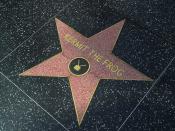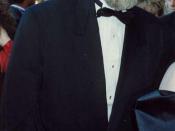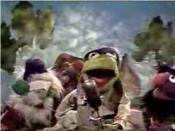Sesame Street is an educational television show aimed towards preschool aged children. Puppets, called Muppets, are the prime educators on the program. They teach kids everything from the alphabet and numbers to hygiene and healthy eating. But once in a while, the show delves deeper than this and focuses on societal problems in the world through easy-to-follow songs and skits. One Muppet in particular specializes in this area. Kermit the Frog, along with his song "Bein' Green", subtly teaches children about what it's like to be different. When the song was first performed on the show in 1972 (Wikipedia), it became an instant hit with kids, adults, and celebrities. It also became an international message on issues including self-esteem and racism. When this song is viewed from a social psychology perspective, many theories pop out from the lyrics. "Bein' Green" can be interrupted as a psychological statement containing the self-discrepancy theory, the self-enhancement theory, and various aspects of the prejudice attitude.
"Bein' Green" is divided into four verses. The first half of the song holds negative psychological aspects while the second half is filled with positive ones. In the first verse, Kermit reveals that "it's not that easy bein' green" (Henson [See Appendix A]). He thinks that green is too plain, and that he doesn't stand out because he's not colourful enough. Kermit's feelings toward being green are related to the self-discrepancy theory. This theory states that when who we think we are does not measure up to whom we think we should be or who we dream to be, we experience negative emotions and lowered self-esteem (Aronson, 178). Higgins and colleagues claim that there are three types of 'selves' that can be perceived. Our actual self is who we believe we are,


